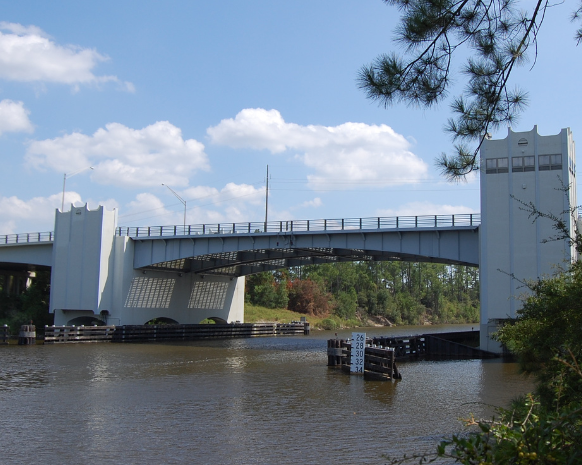SPECIFICATIONS
- Hydraulic Cylinders
- 16” Diameter Bore x 9” Diameter Rod x 186.75” Stroke
- Rated for 3000 psi
- Spherical Bearings at both ends
- Provided with integrated control manifolds
- Hydraulic Power Units
- 250 Gallon Stainless Steel Reservoirs
- Dual pump motor groups, each supplying 42 gpm with 50 Hp at 1750 rpm and 2500 psi
- Integrated control manifold and control valves
- Fully Enclosed Container for transport, transportation, and safety
PROJECT DETAILS
For many years, the Charles Berry Bridge in Lorain, Ohio, was the largest of its kind in existence, until dethroned by the Broadway Bridge in Portland, Oregon.
As the Charles Berry Bridge aged, the mechanical operating systems for each span or “leaf” needed to be replaced. It was critical that the structure function during restoration, since boat traffic needed to pass through the waterway unhindered. SIT got involved with the design and fabrication of a temporary hydraulic operating system which was put in place first to accommodate traffic during the larger restoration project.
The client knew that SIT, with more than 50 years of experience in the movable bridge industry, could be counted on to deliver.
But even with SIT’s vast expertise, this was still no easy project. The project faced a tough deadline and the shear size of the bridge brought its own challenges, along with providing a system that could operate while other work would be taking place. Each bascule leaf is raised and lowered by two hydraulic cylinders provided by SIT. The cylinders measured over 40 ft long when completely extended with 16 inch bore diameters and rated to produce over 600,000 pounds of force. SIT also provided one dedicated hydraulic power unit for each set of cylinders. Each hydraulic power unit was integrated into an enclosed container to protect from contamination and environmental conditions. Electrical control boxes were installed on the outside of the container for ease of connection to the temporary control system.
SIT encountered the unknowns and had to make adjustments throughout the project, but ultimately the work was a huge success. Not only was everything completed in time, but the new power units were so quiet that the client had to add an additional alarm so that people clearly knew when the bridge was moving. The satisfied client later awarded SIT an additional large project involving the Ohio North Coast Pedestrian Bridge.

